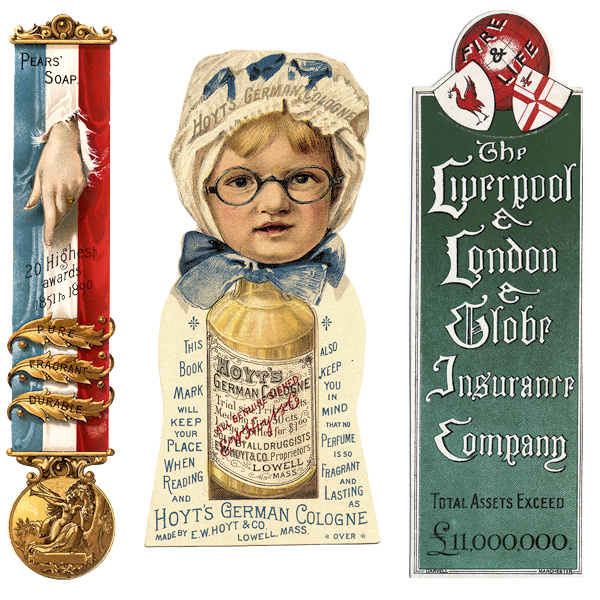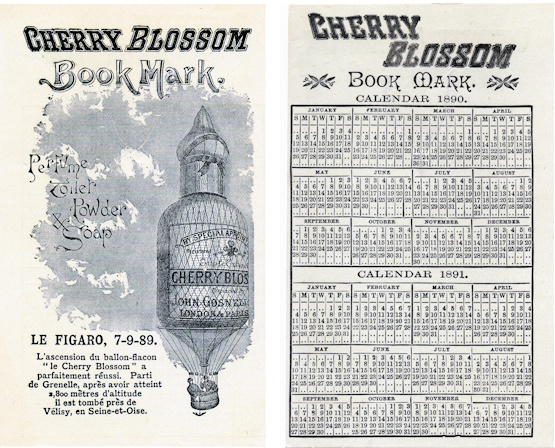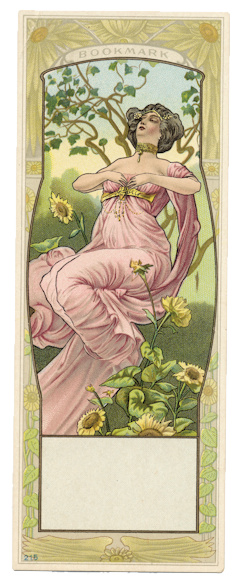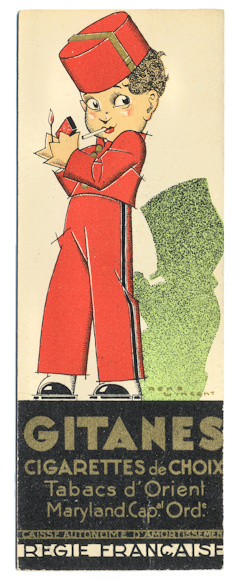 |
|
| News About Us Membership Events Links |
|
Mark of the timesThe bookmark, placed between the pages of a book to mark the reader's place, is an enduring accessory for bibliophiles and book lovers. Unlike annotations or dog-earing pages, a bookmark offers a practical and non-invasive way to preserve the condition of books while being transferable from one book to another. Its versatility and simplicity have made it a staple of reading culture for centuries. The origins of the bookmark are difficult to pinpoint, but early examples were often handmade from ribbon, parchment, or leather. These were used primarily by wealthy readers in the 16th and 17th centuries to safeguard valuable manuscripts and printed books. By the mid-19th century, with the rise of mass production and the burgeoning popularity of books, bookmarks began to be produced in larger quantities, often as decorative and functional accessories.
From the mid-1870s, the printed bookmark emerged as an important medium for companies and businesses to advertise their products and services. These small and portable items were highly favoured as giveaways by advertisers, quickly becoming one of the most popular forms of promotional printed items of the late 19th and early 20th centuries. Companies often capitalised on the practicality of bookmarks by incorporating calendars, conversion charts, or inspirational quotes on the reverse side, adding further utility.
Bookmarks from this era also reflect the prevailing artistic and cultural trends of their time. The Art Nouveau bookmark, for example, exudes an organic style, favouring long, curving lines and motifs of lavish flowers and elegant women. These designs captured the romantic and decorative ethos of the late 19th century. In contrast, the Art Deco bookmark, such as the striking Gitanes bellboy by René Vincent from the 1920s, embodies a more stylised, geometric aesthetic, delivering bold and dynamic imagery that aligned with the modernist sensibilities of the early 20th century. Because bookmarks are inexpensive, attractive in design, and relatively easy to preserve, they are an ideal item for collectors of printed ephemera. They do not require a great deal of storage space and offer a fascinating glimpse into the interplay of literature, commerce, and design over time. Collectors often find joy in exploring the variety of themes, materials, and production techniques used in bookmarks, from intricate die-cut shapes to embossed or gilded finishes. Whether as functional tools, artistic statements, or advertising vehicles, bookmarks hold a unique place in the history of printed ephemera. Their enduring appeal lies in their ability to combine practicality with visual charm, making them a timeless accessory for readers and a rewarding focus for collectors.
|
|
|
Home | News | About Us | Membership | Events | Links | Contact | Item of the month | Articles |
| Copyright © The Ephemera Society 2025. All Rights Reserved. |



